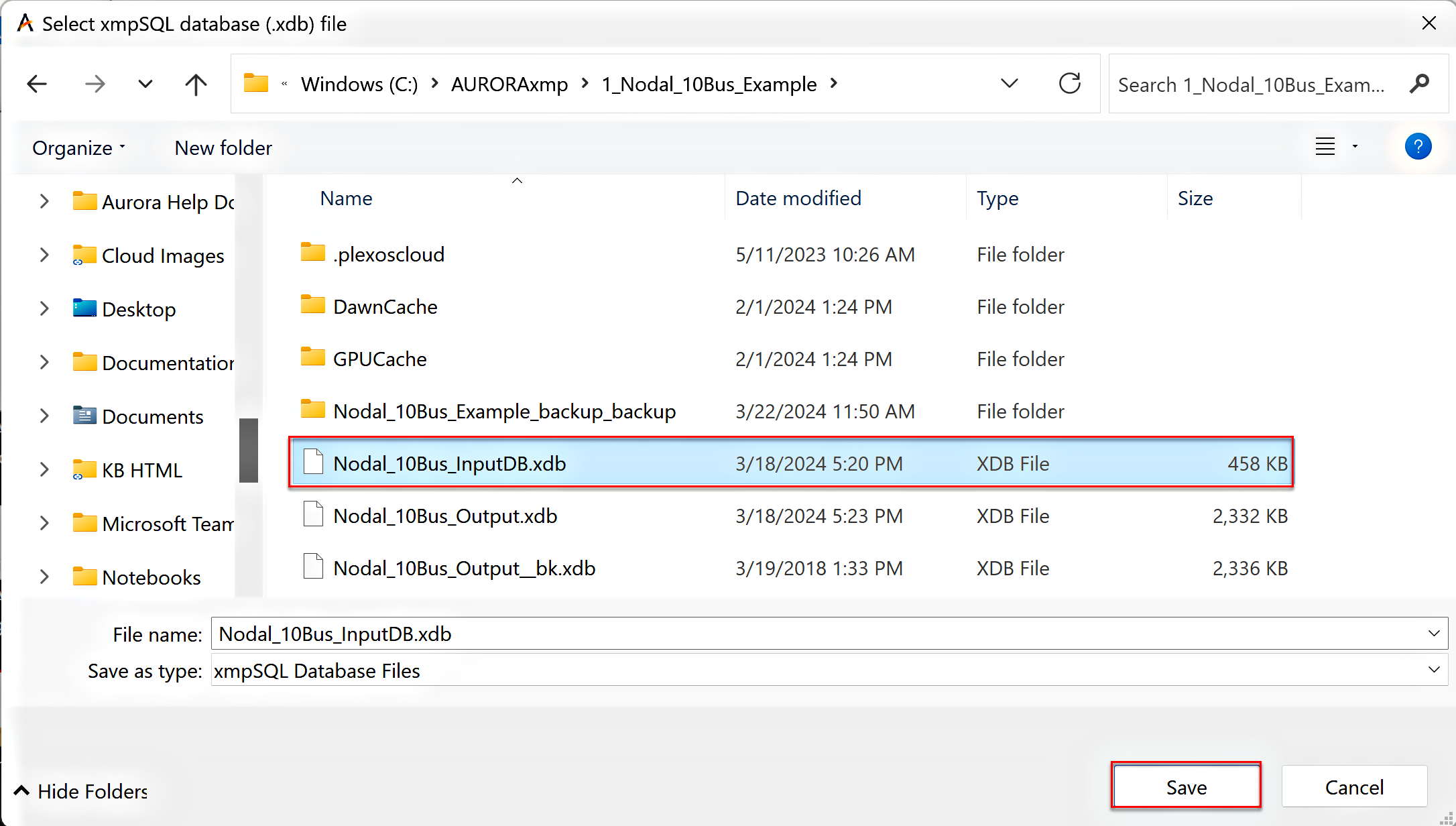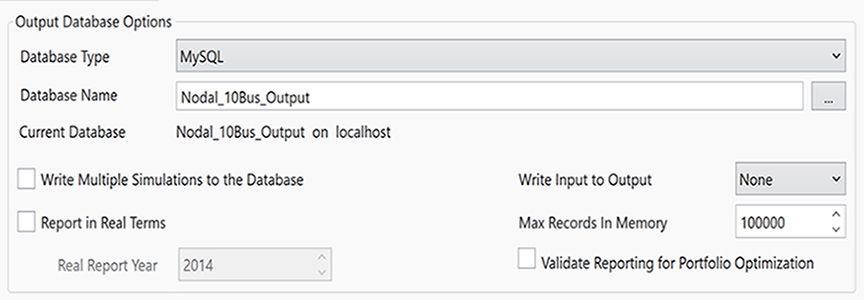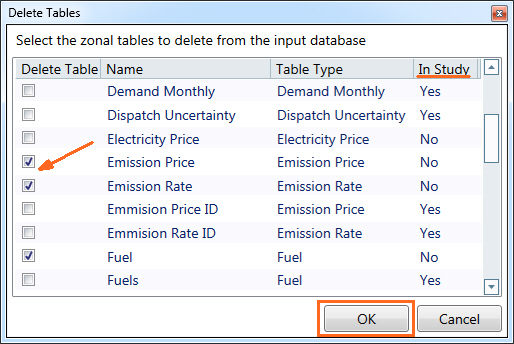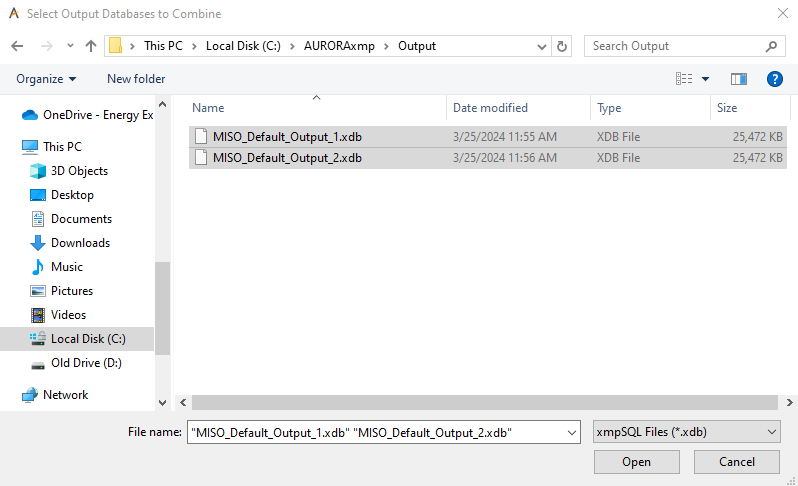Output Tables 
This window allows you to access the Output Tables and options for viewing, printing, and charting output reports.
Select an Output Table to view by double-clicking or right-clicking and selecting View DB Table. The selected table opens in a new window, ready for editing. See Editing Database Tables for more information. Tables are included in this database as defined in the Table Selection form in Simulation Options.
![]() NOTE: If running a 64-bit version of Windows, the output cannot be written to Microsoft Access. See Computer Requirements for more information.
NOTE: If running a 64-bit version of Windows, the output cannot be written to Microsoft Access. See Computer Requirements for more information.
Available output tables include the following:
|
GENERAL TABLES INCLUDE |
NODAL TABLES INCLUDE |
||
![]() NOTE: For Nodal Output Only: Output for infeasible hours will not be written to the database. For Daily, Monthly, Yearly, and Study level output, if any hour contained in the time period is infeasible, then the entire time period will NOT be written.
NOTE: For Nodal Output Only: Output for infeasible hours will not be written to the database. For Daily, Monthly, Yearly, and Study level output, if any hour contained in the time period is infeasible, then the entire time period will NOT be written.
The Output Tables Window also contains a toolbar ribbon with the following features.

Database Actions
|
|
Change DatabaseUse this option to change the output database selection. Select Change Database. A dialog displays so you can select a Database and a Database Type. Click the three dots to naviate to another database .
To select a different database, navigate to the desired database file, select it, and then click Save. Click OK to close the dialog.
This also automatically changes the database selected in the Reporting folder under Simulation Options.
|
|
|
Restore BackupThis button is used to restore backup databases and recover the original data after a run has been started. Backup database are only created when the Auto-backup output database option is selected on the File Menu > Options form.
When a run is launched that will write over an existing database, the model will first copy the database as a backup before creating the new database. The backup database is appended with "_bk" and stored in the same location as the original file.
|
 |
Save DB AsThis option saves a copy of the output database with all active changes and current edits. Aurora will not override the original output database, so a new database name must be chosen. |
|
|
Write Input to OutputUse this option to add input data tables to the output database, which offers the ability to do Output Queries joining information between input and output tables. See for more information. This option works like the Write Selected Input to Output option (in the Reporting form of Simulation Options), in that it will write any input table that has the Report checkbox selected in the Input Tables Window. The resulting tables will be listed with the "{Table_Type_ShortKey} + "_Input_" + {Input_Table_Name}" prefix in the output database. |
|
|
Delete TablesYou can delete multiple tables from the output database using this option. Deleting tables is useful in reducing file size or getting rid of unnecessary tables.
Step-by-step instructions to delete tablesStep-by-step instructions to delete tables Similar to the Input tables option, to delete tables:
|
 |
Combine DatabasesThis option lets you combine multiple databases by selecting them from your local machine and renaming them so that Aurora pulls data from all combined databases.
You must choose the specific xmpSQL output databases you want to combine. If you want to include the current output database when combining, the current output database must be xmpSQL and selected in the file dialog. You can select multiple xmpSQL databases to combine by holding down the Ctrl button when selecting files in the file dialog. The files to combine must be *.xdb files. When you are naming the combined output database, it can be of any database type listed on the dropdown menu.
You can choose the combined output database name and then it will load the newly combined database in Aurora. |
Dataset Actions
|
|
Read DatasetThis button reads the dataset from the current output database file. |
|
|
Write DatasetThis button forces a write of the current data in memory. If a run is stopped by the user, and output is desired, use this button to write the data currently in memory to the output database. |
|
|
Clear DatasetThis button clears the output dataset. To view a cleared dataset, select Read Dataset or use Change Database to re-select the output database. |
|
|
New QueryThis button is used to create queries, including joining tables to create a query using multiple output tables. See Output Queries for more information. |
Right-Click Menu
Aurora provides Output Queries and Pivot Tables for analysis of output data within the model. Table Queries and pivot tables are available by right-clicking the output table (as shown below). Table Queries are also available by clicking the New Query button in the toolbar as described above.

![]() Output Tables
Output Tables
















